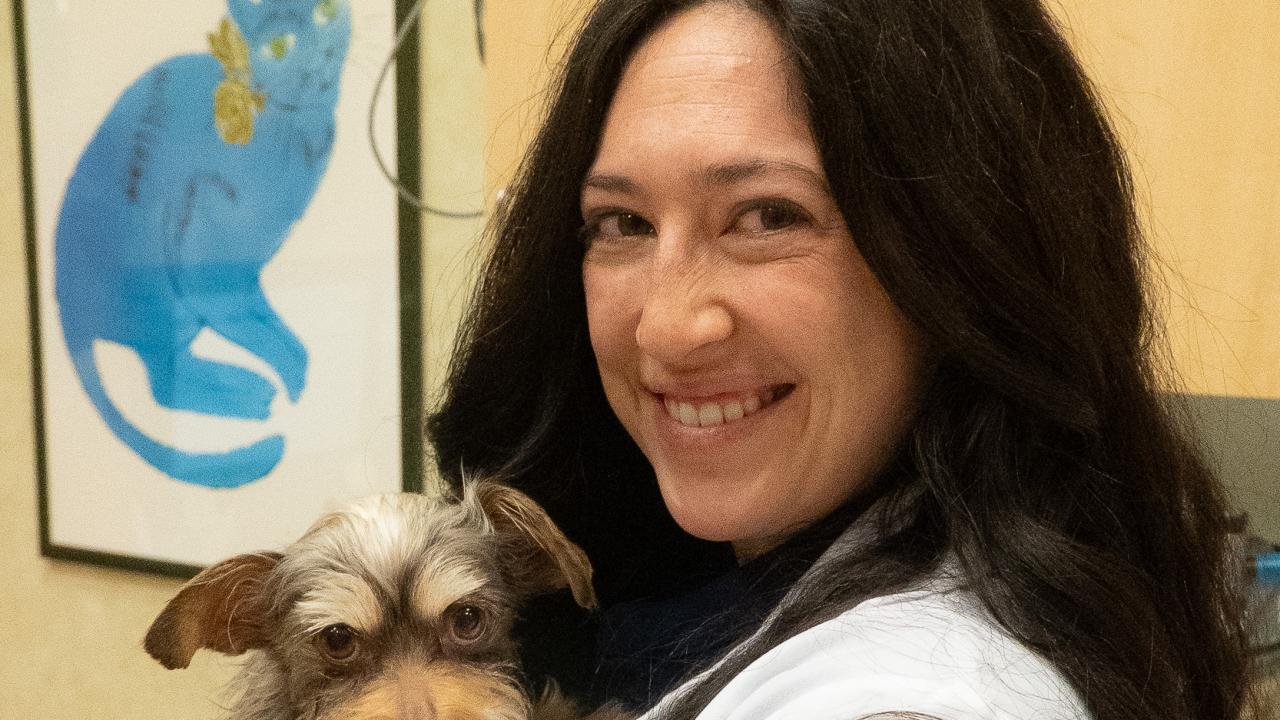
Revolutionizing Oral Cancer Treatments
**This article appears in the Spring 2023 issue of CCAH Update.**
For the past five years, new faculty member Dr. Stephanie Goldschmidt was the section chief of the University of Minnesota’s Dentistry and Oral Surgery Service. However, as a solo practitioner there, she missed being part of a collaborative group of clinicians and cancer researchers.
Now at UC Davis, she joins a team that is establishing new protocols of care and revolutionizing oral medicine. With her exciting idea to change the surgical approach to tumors, she fits right in with this groundbreaking service.
Tumors that result from melanoma or squamous cell carcinoma—two of the most common oral cancers—can destroy the underlying jaw, making eating and playing difficult or impossible.
Goldschmidt is determined to develop an intraoperative tool to delineate cancerous tissue from healthy tissue in real time. This would allow surgeons to remove all cancerous material without disturbing healthy areas, and decrease the chance of significant functional or cosmetic side effects.
“This tool will give us better diagnostics to guide surgical resection,” said Goldschmidt. “It will allow us to remove all tumor tissue efficiently and stop the spread of cancer, helping our patients gain remission.”
To develop the tool, Goldschmidt is working with the Biomedical Engineering Department to create a machine to study fluorescence imaging and the changes in fluorescence properties in cancerous tissue compared to healthy tissue. Similar work is being done at the UC Davis School of Medicine, and Goldschmidt hopes that data gathered from animals will also help apply this technology for people. She has already applied for a CCAH grant to begin pilot data collection later this year and drive this research toward clinical application.
Not only is Goldschmidt determined to improve surgical tools and techniques, but her laboratory is also focused on better understanding how cancers grow and how they react to drugs. She is currently working on establishing both feline and canine squamous cell carcinoma cell lines. Her overarching goal is to improve diagnostic and treatment options in companion pets with oral cancers to improve patient specific outcomes.
“The donors to CCAH play such an important role,” said Goldschmidt. “Their generosity helps to incentivize participation in clinical trials, allowing us to recruit more patients. Not only are we helping to improve the lives of more pets, but we are also able to gather more information to prove new techniques and technologies work.”
# # #
